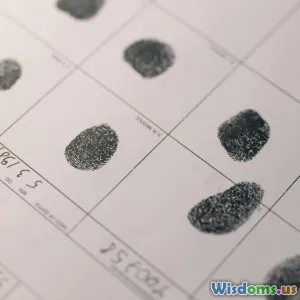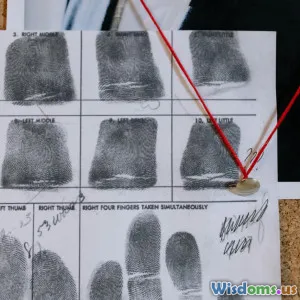
Forensics in the Age of Cybercrime
8 min read Explore the evolving role of forensics in fighting cybercrime and uncover how digital evidence shapes modern investigations. (0 Reviews)
Forensics in the Age of Cybercrime
Introduction: The Digital Battlefield of Modern Crime
In a world increasingly driven by digital connections, the realm of crime has expanded far beyond physical spaces into the vast expanse of cyberspace. As cybercrime surges with sophistication and frequency, forensic science faces a crucial turning point. No longer confined to fingerprints and DNA, forensic specialists must now become masters of code, network traces, and digital footprints. This article explores how forensics is evolving in tandem with cybercrime, uncovering the innovations and challenges shaping justice in the digital age.
The Rise of Cybercrime: A New Arena for Forensics
Cybercrime has exploded into one of the most pressing global issues — costing economies an estimated $10.5 trillion annually by 2025, according to Cybersecurity Ventures. From ransomware attacks locking down critical infrastructure to identity theft leveraging stolen data, perpetrators exploit technological vulnerabilities with alarming ease.
Consider the infamous WannaCry ransomware attack in 2017, which affected over 200,000 computers in 150 countries, causing billions in damage. The complexity and rapid spread of such attacks highlight why traditional forensic methods alone are insufficient.
Digital forensics, a discipline dedicated to uncovering and preserving electronic evidence, has become an indispensable bulwark against these threats. While physical evidence tells one story, the digital landscape often holds the blueprint to unravel criminal intent and methodology.
What Is Digital Forensics?
Digital forensics refers to the collection, preservation, analysis, and presentation of electronic data in a manner suitable for legal examination. It encompasses various subfields including computer forensics, network forensics, mobile device forensics, and cloud forensics.
Key Objectives of Digital Forensics:
- Evidence Integrity: Ensuring data remains unaltered during acquisition
- Trace Recovery: Extracting deleted or hidden data
- Reconstruction: Piecing together sequences of digital events
- Attribution: Linking digital actions to responsible parties
In practice, this may involve analyzing server logs after a security breach, recovering deleted emails relevant to white-collar crime, or mapping communication between suspects over encrypted messaging platforms.
Tools and Techniques in Cyber Forensics
Digital forensic investigators utilize a toolkit blending specialized software and hardware designed to probe computers, networks, and devices without contaminating evidence.
Common Techniques Include:
- Disk Imaging and Cloning: Creating exact replicas of storage devices preserving original data for analysis.
- File Carving: Recovering fragmented or deleted files using signature-based searches.
- Network Traffic Analysis: Examining packet logs to identify unauthorized access or data exfiltration.
- Malware Reverse Engineering: Dissecting malicious software to understand attack vectors and origins.
For example, during the investigation of the 2020 Twitter Bitcoin scam, forensic teams analyzed account access logs and API usage patterns to pinpoint compromised credentials and methods used by hackers.
Furthermore, advances in Artificial Intelligence and Machine Learning are accelerating forensic workflows. Algorithms can detect anomalies across petabytes of data, spotlight probable insider threats, or trace botnet command-and-control communications far quicker than human analysts alone.
Legal and Ethical Considerations
The digital age brings not only new investigative powers but also challenging questions about privacy, data rights, and jurisdiction. Evidence derived from cyberspace often crosses international borders, complicating law enforcement cooperation.
Challenges Include:
- Chain of Custody: Maintaining an unbroken record of evidence handling.
- Encryption and Privacy Laws: Balancing investigative needs with constitutional rights.
- Cross-border Collaboration: Navigating disparate legal systems and data protection regulations.
A landmark example is the ongoing debate over encryption in devices. While encryption protects user data from unauthorized access, it also poses obstacles for forensic investigators trying to unlock devices suspected in serious crimes. Courts, lawmakers, and forensic experts continue to wrestle with finding equitable solutions.
Real-World Impacts: Case Studies and Insights
-
Operation Avalanche (2016-2017): An international collaboration led to dismantling a global cybercrime network responsible for distributing malware and targeting banking institutions. Forensic analysis traced command servers and tainted software, underscoring the power of coordinated digital forensics.
-
DarkSide Ransomware (2021): Following the Colonial Pipeline shutdown, forensic teams quickly recovered and analyzed cryptocurrency wallet flows, aiding in partial recovery of ransom payments and contributing to arrests.
-
Mobile Device Forensics in Human Trafficking: Investigators use extracted GPS logs, messaging histories, and metadata to piece together trafficking routes and communications, enabling victim rescue and perpetrator convictions.
Each case highlights how digital forensic expertise transforms cyber evidence into prosecutable intelligence.
The Future of Forensics in Cybercrime
The arms race between cybercriminals and defenders escalates continuously. Emerging technologies will shape the forensic landscape:
- Quantum Computing: Poised to break current encryption methods, mandating new forensic protocols.
- Cloud Forensics: Addressing challenges in decentralized and virtualized environments.
- AI-driven Investigation: Automation and predictive analytics enhancing threat detection.
Education and continuous training for forensic professionals are imperative. Additionally, integrating multidisciplinary teams combining IT specialists, legal experts, and criminologists ensures comprehensive approaches.
Conclusion: Embracing Digital Forensics for Cyber Justice
Forensics in the age of cybercrime is no longer a luxury but a necessity. As criminals shift to complex digital arenas, forensic science must evolve with comparable rigor and agility. The fusion of technology, law, and investigative acumen provides the foundation for securing justice, safeguarding privacy, and preserving trust in digital societies.
By understanding and supporting advancements in digital forensics, stakeholders—from policymakers to cybersecurity experts and the public—can contribute to a more resilient defense against cyber threats. The fight against cybercrime is ongoing, but with sophisticated forensics illuminating the digital shadows, the path to accountability becomes clearer.
As cybercrime spreads like wildfire in today's interconnected world, digital forensics stands as the wildfire fighter, equipped and ready to chase down even the most elusive digital traces.
Rate the Post
User Reviews
Popular Posts




















